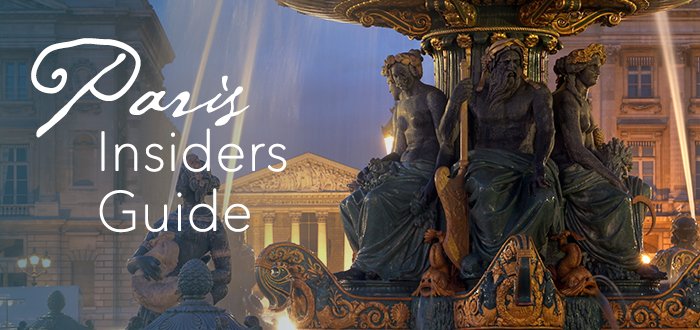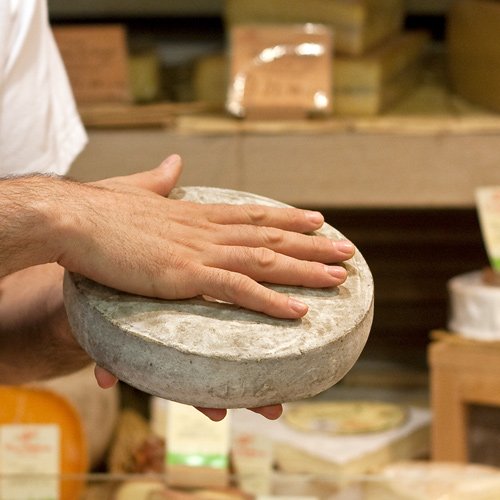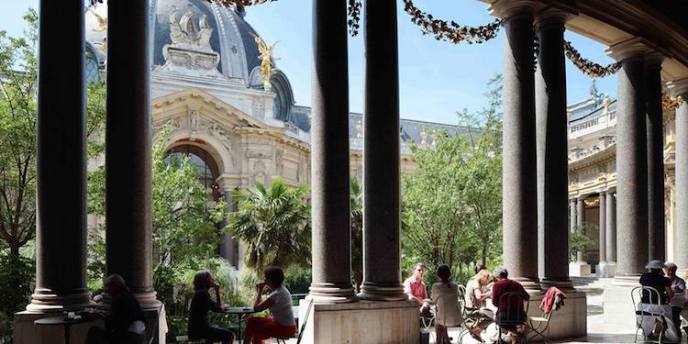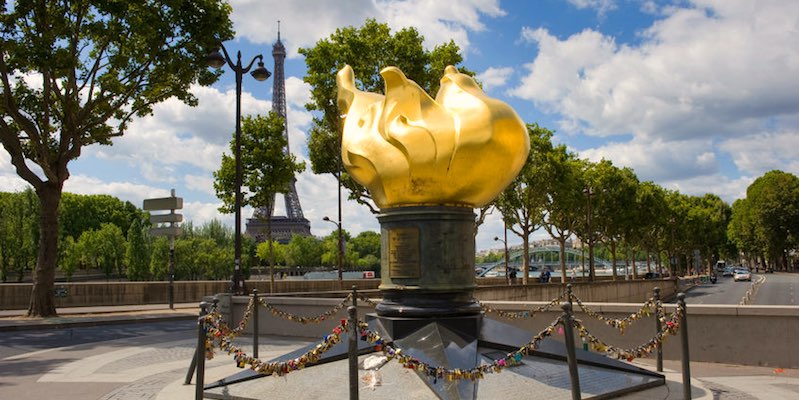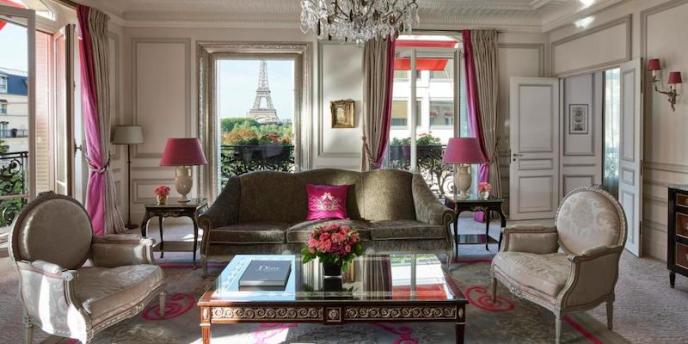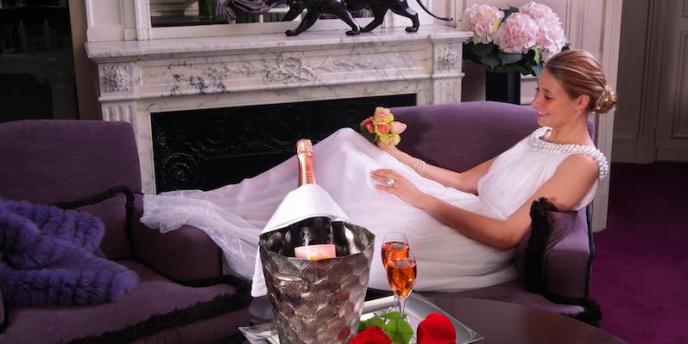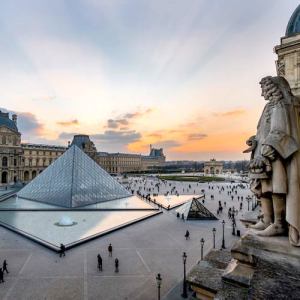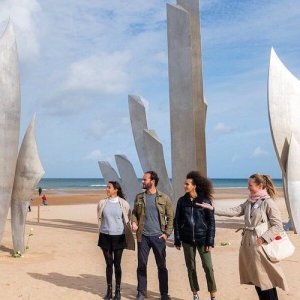The 8th Arrondissement Of Paris – More Than Just The Champs-Elysées
The 8th Arrondissement Of Paris
Yes, Avenue des Champs-Elysées is here, but the 8th Arrondissement of Paris is much more than that. First of all, it's home to almost 40,000 Parisians and full of the things they need on a daily basis — boulangeries, boucheries, food markets, stylistes, and shoe stores. It's also where you find Hotel de Crillon; the Grand Palais and Petit Palais; the elegant Parc Monceau.
![]()
Discover What's On When You're Here...
• January... |
• February... |
• March... |
• April... |
• May... |
• June... |
• July... |
• August... |
• September... |
• October... |
• November... |
• December... |
Discover What's On When You're Here
• January...
|
• February... |
• March... |
|---|---|---|
• April... |
• May... |
• June... |
• July... |
• August... |
• September... |
• October... |
• November... |
• December... |
18 Great Things About the 8th Arrondissement
1. Musée Nissim de Camondo
This beautiful private mansion abutting Parc Monceau was once owned by a wealthy Parisian family, the last of whom were murdered by the Nazis during World War II, with the complicity of Vichy authorities. Today it's a museum and a memorial to the de Camondos and their son, Nissim, an early aircraft fighter pilot who was killed in World War I. Inside you'll discover an impressive collection of furniture and objects from 18th-century France, sort of a legacy to a lost era.
- 63 Rue de Monceau
- 8th Arrondissement Paris
![]()
Romantic Dinner Cruises In Paris
|
VIP Dinner Cruise with Bateaux Parisiens |
Dinner Cruise by Maxim's of Paris |
|
VIP Dinner Cruise with Bateaux Parisiens |
2. Musée Cernuschi – Museum of Asian Art
Near Parc Monceau, this museum is based on the remarkable collection of a wealthy financier named Henri Cernuschi, who collected 20th-century paintings, Chinese art, and Far-Eastern art on his travels. This is a City of Paris Museum and entrance is free. After you complete your visit, make sure to take a stroll in nearby Parc Monceau.
- 7 avenue Vélasquez
- 8th Arrondissement Paris
3. Parc Monceau
On the northern border of the 8th Arrondissement is this elegant and eye-pleasing park built as a private garden for the Duke of Orléans in 1778 by the painter Carmontel. In those days the Monceau area was outside of the gates of Paris. The artist filled the garden with quirky architectural elements like a pagoda, a pyramid, even a Roman temple.
During the renovation of Paris by Baron Haussmann in the mid-19th century Parc Monceau was annexed by the city and was revamped to give it the English-garden style you see today. There's a pond, bridges, and all sorts of odd elements that were gathered from around Paris during the renovation. Perhaps the most famous is the semi-circular colonnade by the basin that may have been part of an unfinished mausoleum of Henry II (1519-1559).
Another thing we find interesting about Parc Monceau is the round building at the north entrance to the park. Known as the Barrriere Monceau it was one of the round tollhouses built around the old city wall about 1785, just before the French Revolution. About 50 of these toll-collecting posts were built at the time, but there are only four still in existence today.
![]()
Experience the Splendor Of Versailles
|
Versailles with Priority Access + Gardens |
Half-Day, Skip-the-Line Tour of Versailles |
|
Versailles with Priority Access + Gardens |
4. Petit Palais – Musée des Beaux-Arts
The Petit Palais is right up against the Seine at Pont Alexandre III and directly across the street from its bigger sibling, the Grand Palais. It was built in 1900 for the Universal Exposition held in Paris that year, and it now houses the Musée des Beaux-Arts — Museum of Fine Arts — of the City of Paris. Renovated not very long ago, the Petit Palais is brimming with a wonderful collection of outstanding paintings. Visit the stunning winter garden featuring mosaic-trimmed ponds and colonnades, or sit outside in the warm months and take some refreshments.
The Petit Palais also stages special exhibitions, recently a popular one about Oscar Wilde and his time in Paris. Because it's a City of Paris museum, entrance is free, except for some of the special shows.
- Avenue Winston Churchill
- 8th Arrondissement Paris
5. The Car-Free Champs-Elysées

Champs-Elysées is arguably the most famous street in the world. Some Parisian still call it "la plus belle avenue du monde", although the proliferation of stores geared to tourists is putting that claim to the test. In normal times, the sidewalks are jam-packed with visitors and the street itself is bumper-to-bumper cars.
The City of Paris, under the guidance of forward-thinking mayor Anne Hidalgo, has declared the first Sunday of every month to be car-free along the Champs-Elysées. "Come to breathe a lung full of air," the City Council tells citizens and visitors, "and enjoy a walk along the avenue without encountering any traffic."
There are other traffic-reducing initiatives being planned for the Champs-Elysées and elsewhere in central Paris, such as the recent banning of cars on Rue de Rivoli. Stay tuned!
![]()
Skip-the-Line at the Louvre Museum
|
The Louvre's Greatest Masterpieces |
Louvre Skip-the-Line Tour |
|
The Louvre's Greatest Masterpieces |
6. Place de la Concorde
Today it's hard to imagine that this stately square, covering 21 acres, was once a swamp. In 1755 Louis XV had architect and garden designer Ange-Jacques Gabriel build an eight-sided royal place to connect the Jardin de Tuileries to the Champs Elysées. In the center a statue of Louis XV was erected and the new square was christened Place Louis XV.
All that royal splendor lasted less then 20 years when the French revolutionaries pulled down the statue and replaced it with the guillotine.
7. The Marly Horses

Flanking the entrance to Champs-Elysées from Place de la Concorde are two sculptures of rearing horses. These were created by the Coustous brothers for Louis XIV's Chateau de Marly. When the chateau was destroyed in the Revolution, the statues were moved here.
What you see today are replicas of the statues. The originals were moved in 1994 to La Cour Marly, the glass-covered courtyard of the Louvre.
![]()
Our Most Popular Day Trips from Paris
|
Spend a Day in the Champagne Region |
Visit the Historic D-Day Beaches |
|
Visit the Historic D-Day Beaches |
8. Église de la Madeleine
With a history as stormy as the French Revolution itself, Église de la Madeleine, located in the center of the place of the same name, was first conceived as a monument sited at the top of Rue Royal that would set off the new Place Louis XV. (This was back in around 1764.) A domed structure was first proposed, the site was readied, and then the Revolution interfered and work was abandoned.
Under Napoleon, work was started again. Until, that is, Napoleon himself was halted. In 1837, the site was proposed as the location for the city's first railroad station and the current design was drawn up. Finally, it was France's last king, Louis XVIII, who decreed that it would become a church.
Twenty-eight monumental steps lead up to the fifty-two giant Corinthian columns, a bit of ancient Greek architecture in the middle of Paris. Église de la Madeleine is today known for its splendid organ, which was played when Chopin's funeral service was held here. A memorable thing to do when you're in Paris is to attend a classical music concert inside this monumental church.
9. Arc de Triomphe
At the top of the most famous avenue in the world is the most famous triumphal arch. The Romans pretty much started this whole arch thing — you can still see one of their arches in Orange, in Provence — but we feel it was Napoleon who perfected it.
The view of Paris from the top of the arch is one of our favorites. From here you can look out onto the streets of the 8th, 16th, and 17th Arrondissements, which all meet beneath the Arc de Triomphe.
![]()
Delectable Food Tours in Paris
|
Discover the Food & Wine of the Marais |
Cheese & Wine Tasting in a Paris Cellar |
|
Cheese & Wine Tasting in a Paris Cellar |
10. Grand Palais
Along the short Avenue Winston Churchill is a grouping of three exuberant examples of Art Nouveau architecture — Pont Alexandre III, the Petit Palais, and the big brother facing it, the Grand Palais. Because of these three architectural flights of fancy, this small part of Paris feels different from the rest of the city.
Like the Petit Palais, the Grand Palais was built for the world's fair held in Paris in 1900, the Universal Exposition. Famous for the vaulted and domed glass ceiling that floods the interior with light, as well as its magnificent staircase, the 54,000 square feet today host art shows, book fairs, special exhibitions, and even a skating rink in the winter! It's worth attending an event there just to get inside the building.
Note: The Grand Palais complex is closed for renovation until 2024
- Avenue Winston Churchill
- 8th Arrondissement Paris
11. Palais de la Découverte
This hands-on science museum located in the Grand Palais complex was our son's favorite place in Paris for a decade or more. There's a planetarium, lots of fun exhibits that teach kids about science while they play, the rat school, ant farms, and lots of special exhibitions about moving dinosaurs, giant insects, apes, light, hair. .
Note: Palais de la Découverte, like the entire Grand Palais complex, is closed for renovation until 2024
- Avenue Franklin D. Roosevelt
- 8th Arrondissement Paris
12. Statue of Charles de Gaulle

When you come up out of the Metro at station Champs-Elysées-Clemenceau (in front of the Grand Palais) you find yourself at Place Clemenceau, named for famous French politician Georges Clemenceau who helped France rally during and after world War I. On this place you find a large statue of… Charles de Gaulle.
That's right, it's the World War II leader of France, striding into the future, on a square named from the World War I leader of France. It's not as odd as it seems, though, because just across the street from Charles is a bronze statue of Georges.
![]()
Find Hotel Deals for Your Dates in Paris
Check the complete list of Paris hotels to find current sale prices on rooms in every arrondissement. Save 10%, 20%… or even more! |
Paris Hotel Deals |
Find Hotel Deals for Your Dates in Paris
Save on hotels in every arrondissement of Paris – the Latin Quarter, Saint Germain, the Right Bank, the Marais, near the Eiffel Tower. Save 10%, 20%… or even more! |
13. Louis Vuitton Flagship Store

It's expensive, it's always crowded with tourists, and you may have to wait in line to get in, but it's worth it to wander among some of the best-made luxury-label clothes you're ever going to see. Take some time to examine the craftsmanship and, if you dare, try something on.
- 101 Avenue des Champs-Elysées,
- 8th Arrondissement Paris
14. Gare Saint-Lazare
Gare Saint-Lazare is the only train station in the western part of Paris and it's right on the border between the 8th Arrondissement and the 9th. This quartier was the setting for a surprising number of Impressionist paintings, especially by Monet, who was intrigued with capturing on canvas the steam clouds emitted by the engines.
Today you head to Gare Saint-Lazare to catch trains to Mont-St-Michel, Dieppe, Le Havre, Caen, and Deauville, among other destinations. We were surprised to learn that it's the second-busiest train station in Paris.
- 13 Rue d'Amsterdam
- 8th Arrondissement Paris
![]()
Our Most Popular Day Trips from Paris
|
Spend a Day in the Champagne Region |
Visit the Historic D-Day Beaches |
|
Visit the Historic D-Day Beaches |
15. Restaurant Pierre Gagnaire
Pierre Gagnaire's restaurant has been opened in this location on Rue Balzac since 1998, and has held three stars for almost that entire time. (He received two stars the year the restaurant opened, three stars ever since.) Found on a small side-street about as close as you can get the the Arc de Triomphe, it's a surprisingly quiet and calm enclave.
In the intervening years, Gagnaire has expanded his small empire by taking over two other restaurants in Paris — Gaya in St-Germain and the legendary Le Fouquet's on Champs-Elysées — as well as opening restaurants in Tokyo, Hong Kong, and elsewhere, but we think this is still his best, and one we cite as being worth a splurge.
- 6 Rue Balzac
- 8th Arrondissement Paris
- Website…
16. Brasserie Lorraine

It's a typical brasserie on Place des Ternes at the edge of the 8th, and it oozes Parisian dining with its elegant room, white tablecloths, professional service, and French specialties. It's not a restaurant you're going to read about in many best-of lists, but it's a pleasant place to dine if you're staying nearby. We like coming here for the terrace on the place and for the oysters.
- Place des Ternes
- 8th Arrondissement Paris
- Website…
17. The Flame of the Statue of Liberty
The flame of the Statue of Liberty is found at Pont d'Alma on the Seine. This is a a full-sized, gold-leaf-covered replica of the flame found at the top of the torch on the statue in New York. The monument was the result of a campaign by the International Herald Tribune to celebrate its hundredth anniversary of publication in Paris, and the flame was dedicated in 1988. However, ever since Diana, Princess of Wales, was killed in the tunnel beneath the quay in 1997 the flame has become a sort of unofficial memorial to her life.
![]()
The Highest-Rated Paris Activities
|
Cheese & Wine Tasting in a Paris Cellar |
VIP Dinner Cruise with Bateaux Parisiens |
|
VIP Dinner Cruise with Bateaux Parisiens |
18. Avenue Montaigne Luxury Shopping

The retail section of Avenue Champs-Elysées has somewhat been given over to tourist shopping, but there still are nice luxury brands like Louis Vuitton, Hugo Boss, and Lancel. But Avenue Montaigne — between Place Franklin D. Roosevelt and the river — is to haute couture what the Louvre is to art.
Located in luxury townhouses, you'll find store after store of today's high fashion brands — Chanel (with two stores), Salvatore Ferragamo, Dolce & Gabbana, Dior, Nina Ricci (showing the most beautiful lingerie in the world), Valentino, Prada, Bottega Veneta, another Louis Vuitton.
![]()
Find Hotel Deals for Your Dates in Paris
Check the complete list of Paris hotels to find current sale prices on rooms in every arrondissement. Save 10%, 20%… or even more! |
Paris Hotel Deals |
Find Hotel Deals for Your Dates in Paris
Save on hotels in every arrondissement of Paris – the Latin Quarter, Saint Germain, the Right Bank, the Marais, near the Eiffel Tower. Save 10%, 20%… or even more! |
The Best Places to Stay in the 8th Arrondissement
The sheer number of luxury stores is a hint that there's also no shortage of luxury hotels in the 8th. In fact, here's where you find the highest concentration of 5-star and Palace hotels in Paris, all world-class accommodations.
Plaza Athénée
Gorgeous rooms, top-notch service and close to all of the best of Paris shopping, museums and monuments, Plaza Athénée pretty much defines luxury. And that's confirmed by the hotel's prestigious Palace rating, more luxe than five stars.
Royal Monceau Hotel
"Unforgettable luxury," a visitor has opined and the Monceau's Palace designation confirms that. Designed by Philippe Starck, this 8th Arrondissement hotel is a breath of fresh air compared to the old-fashioned Louis XIV feel of some other luxury hotels.
Hotel Lancaster
Occupying a 19th-century hôtel, the Lancaster has the feel of an elegant private mansion, and in a most serene way. In our review we say that "Zen" could be the Hotel Lancaster's middle name. Experience the art of living à la Française. And it's not just us. Travelers, too, rave about this 5-star hotel.
Hotel Champs Elysées Plaza
Generously-sized rooms with separate Jacuzzi baths and showers plus Hermés body care products all make for a luxurious stay in the 8th Arrondissement. We rate it Superb.
Hotel Francois 1er
This elegant hotel is just off Champs Elysées and close to the Louis Vuitton flagship store. It's the details make this Paris hotel special — a free glass of champagne, chocolate on your pillow… "After 18 trips to Paris, I finally found this little gem", enthused a recent visitor. For our part, we rate it Superb.
8th Arrondissement Resources

The Champs Elysées is the spine of the 8th Arrondissement, running its entire east-west length, from Place de la Concorde (in the east) to the Arc de Triomphe in the west, where the 8th, 16th, and 17th Arrondissements meet. Like other Paris arrondissements, the 8th is defined by the Seine and certain landmarks. The river is its southern border and landmark points are Place de la Concorde, Place de l'Alma, with its bridge and golden flame, the Arc, Place des Ternes, Place de Clichy, and the church of La Madeleine.
- Metro Line 1 runs along Champs-Elysées and can get you to many of the interesting spots of Paris since it traverses the entire city from east to west. Stations along Line 1 in the 8th are Concorde, Champs-Elysées-Clemenceau,Franklin D. Roosevelt, George V, and Charles de Gaulle-Etoile.
- Other Metro lines cross the 8th running more or less north and south. Lines 12 and 8 pass through Concorde. Line 13 through Clemenceau. Line 9 passes through Franklin D. Roosevelt. Etoile is also served by Line 2 and 6, forming arcs through the north and south of Paris respectively.
- A further three Metro lines intersect at St-Lazare — 3, 12, and 13.
- Theatre des Champs-Elysées at 15 Avenue Montaigne is where Stravinsky's revolutionary ballet Rite of Spring premiered in 1913. The outrage and resulting riot are the stuff of music legend. Today, you can still attend performances of classical music at the historic theatre.
- Both the Canadian Embassy in France and the US Embassy in France are located in the 8th Arrondissement.
Paris Planning Guides
 VIP to Champagne
VIP to Champagne |
 Book an Airport Transfer
Book an Airport Transfer |
 Visiting Versailles
Visiting Versailles |
 Glorious Dinner Cruises
Glorious Dinner Cruises |

